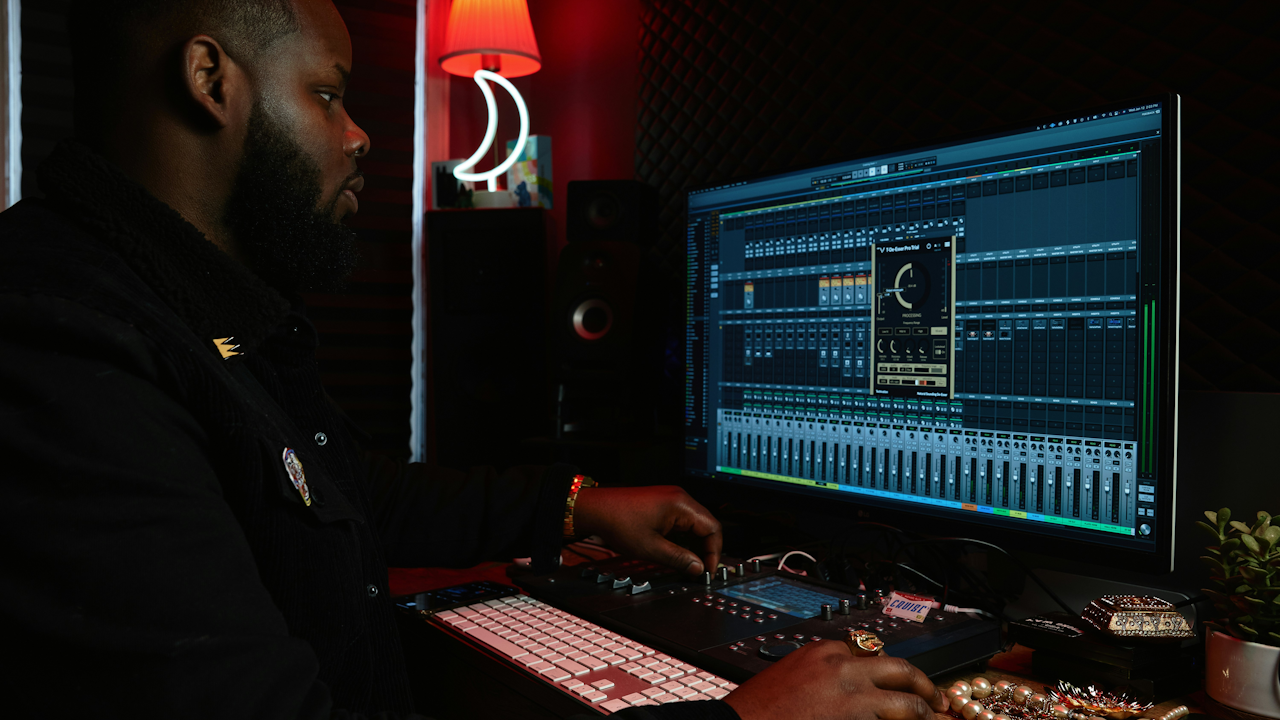Autotune has become one of the most polarizing tools in modern music. Since its emergence in the late 1990s and early 2000s, the pitch correction technology has drawn both praise and criticism. Some view it as a revolutionary instrument that opens new creative doors. Others see it as a crutch that undermines the authenticity and skill of vocal performance. This debate touches on broader questions about the role of technology in art. Is Autotune a creative tool that enhances musical expression, or has it become an overused device that diminishes the value of real talent?
To understand this debate, it’s important to consider what Autotune actually does. Developed by Antares Audio Technologies, Autotune was originally designed to correct slight pitch inaccuracies in vocal and instrumental recordings. Its intent was to subtly adjust a performance so that the final product sounded polished without altering the natural tone of the voice. However, it was soon discovered that by exaggerating these adjustments, Autotune could create an unnatural, robotic effect. This sound became a defining feature of early 2000s pop and hip-hop, most famously in Cher’s 1998 hit “Believe” and later in the works of T-Pain, Kanye West, and Travis Scott.
Supporters of Autotune argue that it has become a legitimate artistic tool. Much like a guitar pedal or synthesizer, Autotune allows musicians to experiment with new textures and styles. Artists such as Bon Iver and Imogen Heap have used Autotune in unconventional ways, pushing the boundaries of vocal performance and production. In this context, Autotune is not hiding a lack of talent but rather expanding the expressive capabilities of the human voice. Some singers intentionally use it to evoke emotional distance, dream-like atmospheres, or even alienation. These are aesthetic choices that align with the themes of their music.
In genres like pop, hip-hop, and trap, Autotune is now part of the genre’s signature sound. It has contributed to the rise of a new kind of vocal performance that values tone, rhythm, and emotion over technical precision. Rappers who use Autotune are not necessarily trying to pass as singers. Instead, they blend rapping and singing into a hybrid vocal style that would not be possible without digital processing. For these artists, Autotune is not a shortcut but a foundation of their artistic identity.
Critics, on the other hand, argue that Autotune has become a crutch. They claim that its overuse reflects a decline in musicianship and vocal training. In live performances, some artists rely on Autotune to stay in tune rather than improving their vocal skills. This raises questions about authenticity. When a listener hears a song that has been heavily processed, they might wonder how much of it is the artist’s natural voice and how much is the software. Critics argue that this undermines the emotional connection that comes from hearing a raw, unfiltered performance.
Moreover, Autotune has become so widespread that some feel it creates a homogeneous sound. When every voice is processed to hit the same perfect pitches and tones, the uniqueness of individual vocal timbres can be lost. This standardization can make music feel sterile or formulaic. In this sense, Autotune is seen not as a creative tool but as a means to conform to commercial expectations. It can be argued that producers use it to package artists in ways that are more marketable but less genuine.
The debate over Autotune also reflects deeper tensions between tradition and innovation. Classical music and jazz, for instance, place high value on live performance and technical mastery. In these circles, the idea of correcting or enhancing a performance digitally may seem dishonest or lazy. But in the world of electronic music and pop, studio manipulation is part of the artistry. Just as photography evolved from film to digital editing, music production has evolved to include digital enhancement. Whether this evolution is seen as progress or decline depends largely on one’s values about art and authenticity.
The commercial pressures of the music industry further complicate the issue. Labels and producers are often focused on making tracks that will perform well on streaming platforms and radio. A clean, pitch-perfect vocal is more likely to appeal to a broad audience. As a result, even artists who do not prefer Autotune might feel pressured to use it. This raises concerns about creative freedom and the extent to which technology is driving musical trends, rather than artists themselves.
Ultimately, the question of whether Autotune is art or an overused tool may be the wrong one to ask. Like any instrument or technology, its value depends on how it is used. When applied thoughtfully and creatively, Autotune can enhance musical expression and create new forms of beauty. When used lazily or excessively, it can strip away the soul of a performance. The responsibility lies with artists, producers, and listeners to recognize the difference.
In conclusion, Autotune is neither inherently good nor bad. It is a tool, and like all tools, it can be used to build something remarkable or to cover up flaws. Its impact on music is undeniable, and its role continues to evolve. Whether it is seen as an artistic asset or an overused gimmick depends on the intent behind its use and the ears of the listener. As music continues to blend genres and embrace technology, the debate over Autotune will likely persist. What matters most is that artists remain intentional in their choices, using technology not to replace creativity, but to expand it.

